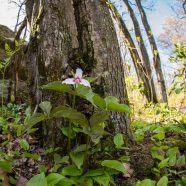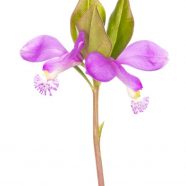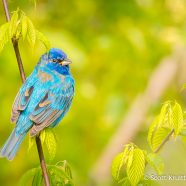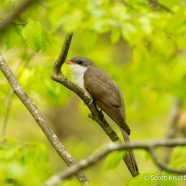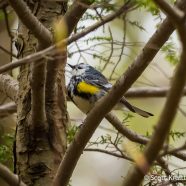Painted Trillium (Trillium undulatum)
One of these days I’ll stop posting pictures of Painted Trillium (Trillium undulatum), but they’re just too pretty not to… Twan Leenders RTPI President
Read MoreFringed Polygala (Polygala paucifolia)
RTPI President Twan Leenders was looking for native orchids recently in the Allegheny National Forest, but it turned out he was just a little too early for them to bloom. However, he did come across one of his favorite spring ephemerals – Fringed Polygala (Polygala paucifolia) which is somewhat orchid-like in its unusual appearance. Photographed for the Roger Tory Peterson Institute of Natural History and the Meet Your Neighbours global biodiversity project.
Read MoreIndigo Bunting (Passerina cyanea)
This Indigo Bunting (Passerina cyanea) ((and what a very appropriate Latin species name that is)) may be a first-spring male coming into his full blue splendor. He was belting out his song in this forest cut, perching on tree branches on the edge of the woodland and finding a shrub or two to allow me a better look while snagging a snack. They are persistent songsters with the tune carrying on all morning and likely through the afternoon. If you are truly lucky – like Twan – then you regularly get to see these birds in your backyard at your thistle feeder. What a striking contrast...
Read MoreYellow-billed Cuckoo
The ghosts of the forest, the cuckoos are as tough to actually see as any bird of their size and habitat can be. They may be all around us but they move so silently and sit perfectly still to elude detection, even at eye level. For a bird as apparently common as they are they certainly know how to keep a low and hidden profile. This Yellow-billed Cuckoo (Coccyzus americanus) was one a few that I heard yesterday, and these were the best shots I could manage before this bird vanished again. I heard at least 10 Black-billed Cuckoos but saw only one as it flew from one tree to another while...
Read MoreLeucistic Yellow-rumped Warbler
Here is that unique Yellow-rumped Warbler which I mentioned in a previous post. Can you see what looks different about it? I noticed it naked eye while tracking various subjects in a loose flock through the trees last week including more Yellow-rumps, Black-and-white Warblers, Blue-headed Vireos, and Blue-gray Gnatcatchers. After I got my binoculars on it I realized this bird was partially leucistic, and I quickly raised my camera to snap off a record photo. Leucism in birds is when melanin pigments are produced at less than normal levels or in an unexpected pattern. In this case many of the...
Read More



